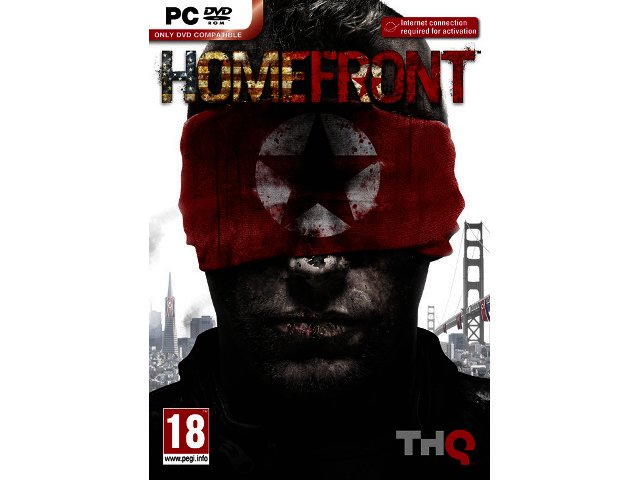Homefront is a new first person shooter from THQ and Kaos Studios that sees players fighting as part of the resistance forces in an occupied United States.
The moment you start Homefront for the first time, players are greeted not with a slick cutscene and a rock 'n roll track playing in the background, but rather by a grainy, real life news broadcast showing Hillary Clinton blaming the 2010 sinking of a South Korean warship on North Korea. This focus on realism largely helps set the tone for the rest of the game.
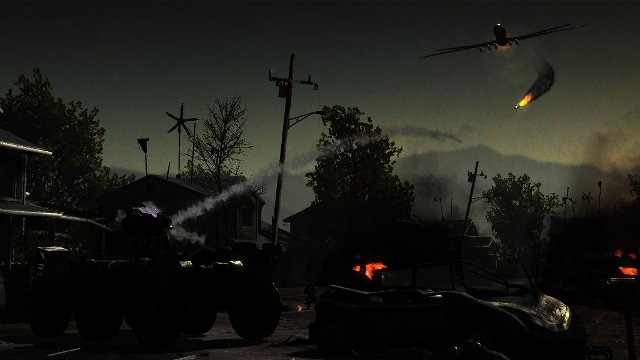
Story
In fact it’s Homefront’s alternate history setting, though unlikely, that draws one in, and was penned by John Milnius, the writer responsible for classics such as Red Dawn and Apocalypse Now.
In the game, a rogue North Korea taken over by Kim Jong-il's son, Kim Jong-un, has been steadily gaining military and economic power, eventually reuniting the two Korea’s. With the United States bogged down in oil wars on the other side of the world, the newly formed Greater Korean Republic (GKR) now had the freedom to annex a number of major Asian countries, slowly building up its power to challenge the US as the world's strongest superpower.
The build-up culminated in the launching of a bogus communications satellite in 2025 which turned out to be a massive EMP (electro-magnetic pulse) emitter, plunging the US into darkness and opening the door for a full scale military invasion.
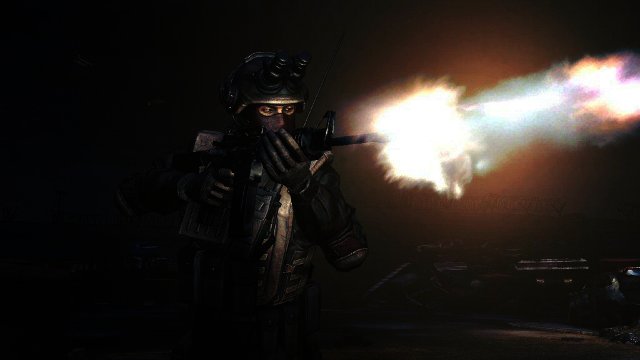
Resistance is futile?
The game sees the player taking on the role of ex-pilot Robert Jacobs, who is (just our luck) quickly arrested at the start of the game and forced onto a waiting prison bus. As we waited to be ferried to our doom we noticed a few things that help separate Homefront from the rest of the shooter mill, one of this being the ability to create a realistically brutal occupation environment.
As the bus trundled along the broken streets we saw previously peaceful suburbia turned into a disaster scene. GKR troops and police can be seen everywhere, and the air reverberates with the sound of loudspeaker propaganda as families and loved ones are forcefully separated, their screams of anguish drowned only by the barking of guard dogs.
Suddenly, a man frees himself from the grip of a soldier and tries to make a run for it. He is shot seconds later, blood from the gunshot wound to his head staining the bus windows red. It's this kind of story telling which helps set Homefront apart in the sea of shooters.
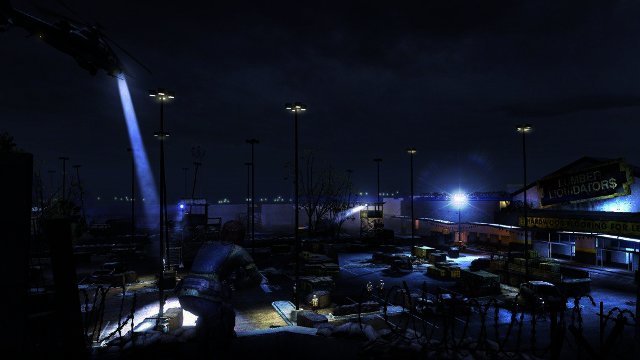
Gameplay
On the gameplay front however, Homefront plays like your run-of-the-mill FPS, and unfortunately does not introduce anything in the way of ground breaking qualities. It's clear the the single player campaign drew a lot from Call of Duty games, playing off as a collection of set-piece events and quick bouts of explosive, yet linear action. Anyone familiar with an FPS title from the last decade will be able to pick up and play the game without much hassle.
The supporting cast, and as such supporting AI in the game didn’t impress us too much though, not only for their stereotypical personalities and annoying lines, but for the most part due to the clunky interactions they have with the player. You can’t open a door by yourself here for example, no, you have to wait until one of the AI cast does it for you, and then you have to wait until every chattering character has passed through the doorway before the game finally allows the player to proceed. Similar scenarios pop up throughout the game, making it feel more like a pre-scripted carnival haunted house ride than a game you can explore.
The campaign is well varied though, with helicopter flying, stealth, sniping and missile raining action delivering a comprehensive combat experience. Calling in fire support is a standard in these games, but Homefront does make it a tad more interesting by allowing players to control the Goliath, a remote-controlled Hellfire missile spewing ground vehicle. For the most part Goliath is an effective and useful weapon, but unfortunately a buggy piece of pathing code caused the vehicle to get itself stuck on a piece of the environment during our replay. With the vehicle stuck in place our AI-controlled teammates were unable to continue with their scripted sequence, requiring us to restart the game and re-attempt the mission.
Bugs like these cause annoyances, but our chief complaint against Homefront's single player campaign is its shortness, with players able to run through it in about five hours.
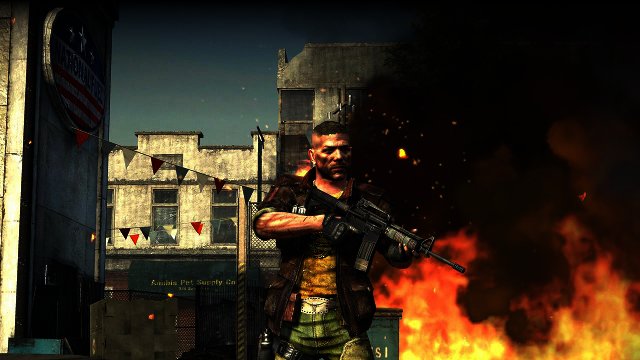
Meet Connor, a promising nomination for 2011's Most Annoying Video Game Partner awards.
Presentation
On the graphics side the game looks decent, but don’t expect it to be one of the best looking shooters of the year. We experienced some lag during parts of the campaign as well, which was strange, since the same machine on which Homefront was lagging had just played Crysis 2 on high settings without even a second of hesitation, indicating this is due to buggy video rendering rather than performance issues. We also encountered parts in levels where graphical elements didn’t seem to want to load properly. Hopefully the developers will look into these bugs as time goes on.
On that note, players need to know that you’ll need to install quite a sizeable update the first time you run Homefront on PC, luckily though this is made hassle free thanks to Steam’s automatic downloads, but you’ll still have to give up some time and bandwidth. The same updates will have to be downloaded on Xbox 360 and PlayStation 3 as well (if you wish to play multiplayer that is).
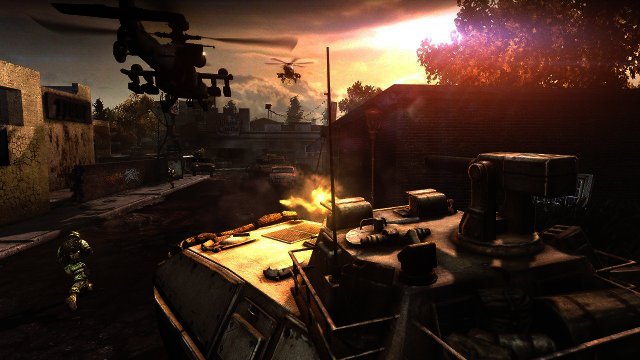
Multiplayer
Homefront's multiplayer helped make up for the game's short campaign (and silly AI cast), with the combat feeling like a mixture between Battlefield and Call of Duty. Plenty of run-and-gunning is available for COD fans, while players can control vehicles such as Humvees and Apache attack helicopters to rain down some serious fire. The game features two primary modes, namely Ground Control and Team Deathmatch, with Ground Control following the Battlefield premise of capturing and holding control points. The aspect that really set the multiplayer offering apart though was the Battle Points (BP) system.
Players earn BP by completing certain actions (killing an enemy, capturing a control point), which is then used to unlock new weapons and abilities in the game. For example, BP can be exchanged for a missile strike, remote-controlled drone or new weapons and is also used to access vehicles such as helicopters and tanks.
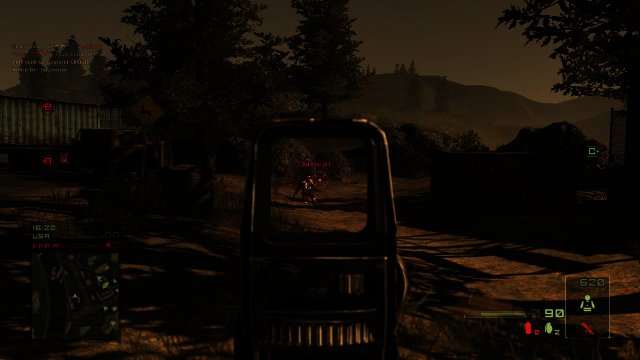
Conclusion
Homefront’s ambitious storyline and graphical portrayal of military occupation are some of the stand-out features of the game and its major drawing cards. You don’t often encounter the US as the underdog, with this “under occupation” story offering a far more emotional experience than your standard shooter.
The game delivers a solid, yet non revolutionary FPS experience to the market. Although it's unfortunately quite a short game, with a few bugs still present here and there, an enjoyable multiplayer helps make up for this.

